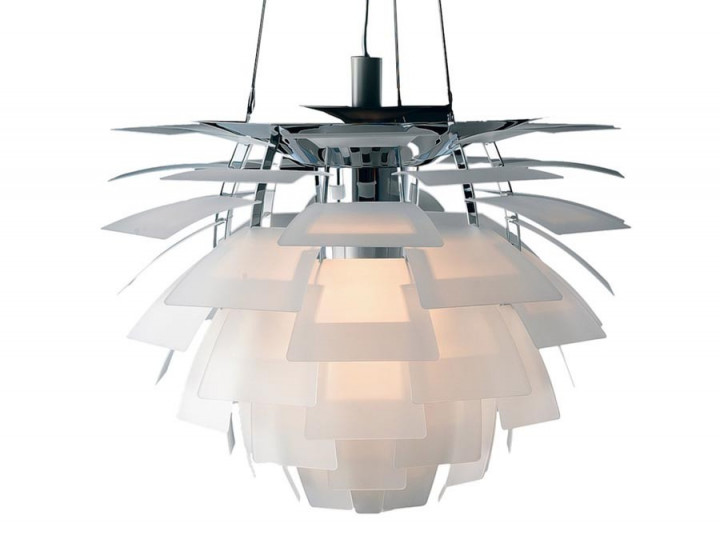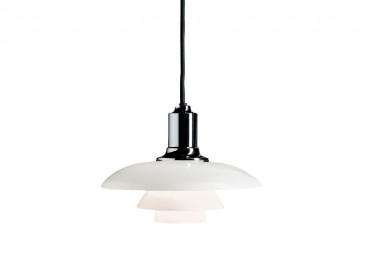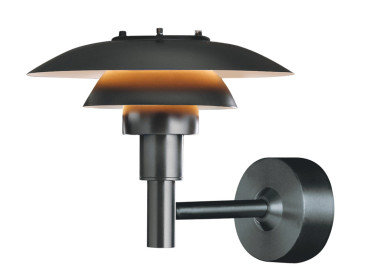Mid-Century modern scandinavian pendant lamp PH Artichoke Glass, 4 sizes, by Poul Henningsen for Louis Poulsen
-
Poul Henningsen
-
Louis Poulsen
- LP031 Delivery time : 1 to 2 weeks
Poul Henningsen’s PH Artichoke Glass was launched in 2008. The origins of the glass version date back to 1927-31 when Poul Henningsen developed the PH Septima glass light – a pendant with seven glass shades which Louis Poulsen manufactured up until 1940 when it was discontinued due to a lack of raw materials during the war. When Poul Henningsen was asked to develop a light for the Langelinie Pavillonen restaurant in 1958, he was able to finish the project in three months, because PH Artichoke Glass is based on the ideas in Septima. Septima consisted of seven shades made from clear glass with six sand-blasted regions. In PH Artichoke, the shades were grouped into ’picket fences’, as Poul Henningsen called them, and the light was made of copper. PH Artichoke Glass, which is made of handmade sandblasted glass, is closer to Septima in its expression. The light is diffused through the leaves, making it soft and comfortable. Whether the light is switched on or off, the leaves have a transparent ice-like appearance, adding elegance and lightness to the room.
Recommended bulb: E27, 100W or LED
| Year | 1958 |
| Dimensions | See picturesCable : 4 m. Weight : 10 kg |
| Material | Material: Leaves: Clear glass, sandblasted. Frame: Bright chrome plated steel. Canopy: Yes Cord length: 4 m Cord type: White fabric w/wire |
| Style | Classique Neuf |
| Origin | Denmark |
| Fournisseur | Louis Poulsen |
Poul Henningsen
Denmark (1894-1967)
Danish architect Poul Henningsen, known by his initials, PH was obsessed with light. He is the legendary creator of the lighting series carrying his name. He can be said to be the worlds first lighting architect.
Poul Henningsen devoted his entire career to investigating the importance of light for our well being. He worked on the theory that the observer should not be subjected to direct glare from the electric light source. Henningsen used a series of layered shades to both spread the light and conceal the light bulb, thus creating a softer more diffused lighting. One of Denmark's major figures in 20th-century lighting design, Henningsen was also an independent architect, designer of theatre interiors and tubular steel furniture, critic, and editor of the magazine Kritisk Revy (Critical Review). Highly critical of the widespread lack of imagination in domestic lighting in Copenhagen, Henningsen came to prominence with the first of his multi-shade lamps designed in 1924, setting the pattern for his subsequent lighting work. Known as the Paris Lamp (and later as the PH lamp) it won a competition for a light fitting for the Paris Exposition des Arts Décoratifs et Industriels of 1925, where he was awarded a Gold Medal, and was put into production by the Danish lighting manufacturer Louis Poulsen.
Henningsen's design principles were based on the scientific analysis of the ways in which lampshades distribute light, glare, and reflection. The PH lampshades were composed of a series of separate, interleaved elements that gently diffused the light throughout the space in which it was situated as well as directing it downwards





















